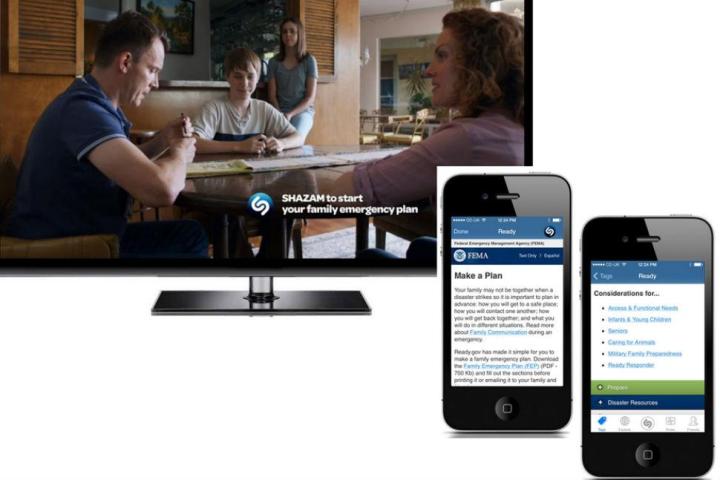
It used to be that those terrifying, show-interrupting, static-filled TV announcements were how we learned about an impending disaster – a flash flood, high wind, area forest fires. Now, iPhone alerts and Twitter handles deliver more of the same – but there’s a new app that wants to keep you prepared. Actually, it’s an old app: Music discovery app Shazam is expanding its services to become a useful tool for emergency preparedness.
Smartphones and social networks sometimes get a bad rap for distracting people, but it’s been proven time and time again that Facebook, Twitter, and iPhones can come in handy during emergencies. And now Shazam wants to increase its utility by partnering with the Ad Council to introduce “Shazamable ads,” PSAs directing users to tools and resources in case of emergency.
The first set of ads are part of Federal Emergency Management Agency’s Ready Kids campaign, airing during September (National Preparedness Month). Shazam CEO Rich Riley reached out to the Ad Council to offer the company’s services for their U.S. campaigns. Shazam users watching the ads on television or hearing them in the car can use the app to learn more about what to do if a problem arises. The app isn’t for use as an emergency unfolds, so it won’t tell someone how to escape from an earthquake, but it provides supplemental information about how to best prepare for the worst.
David Jones, Shazam’s executive vice president of marketing, is enthusiastic about how helpful the information can be for people making emergency plans. “It’s information about how to make a family emergency plan, the things you should think about and talk through with your family, and some decisions you should make,” he says. “Unfortunately, a lot of people assume their cell phones will work and the roads will be open so they can get home. The reality is, when something happens, the phones don’t work, and you need to figure these things out.”
For now, the information that crops up when someone uses Shazam on a FEMA PSA doesn’t differ from region to region or update if inclement weather approaches, but Jones says the company has the technology to provide continuous updates. “We can be pointing to up-to-the-second content produced by our partner,” he says. So as the campaigns progrelpellss they may introduce information more specific to disaster-prone areas.
Clealry, Shazam is useful for more than figuring out which Wilco song you’re hearing — while these are public service advertisements, the company also partners with a variety of advertisers and companies to give people extra information. Jones described how Shazam participated in the 2012 Olympics by partnering with NBC Sports to provide a second screen experience. Shazam also uses data from Nielson to determine which ads are a bigger hit among its users, and they share that information with their partners, which can provide insight into which campaigns work. This branching out into television partnerships is giving Shazam a whole new way to be useful, and it may help the app propel past its audio discovery competitors. And Shazam’s expansion is ramping up thanks to funding from telecom giant Carlos Sim.


